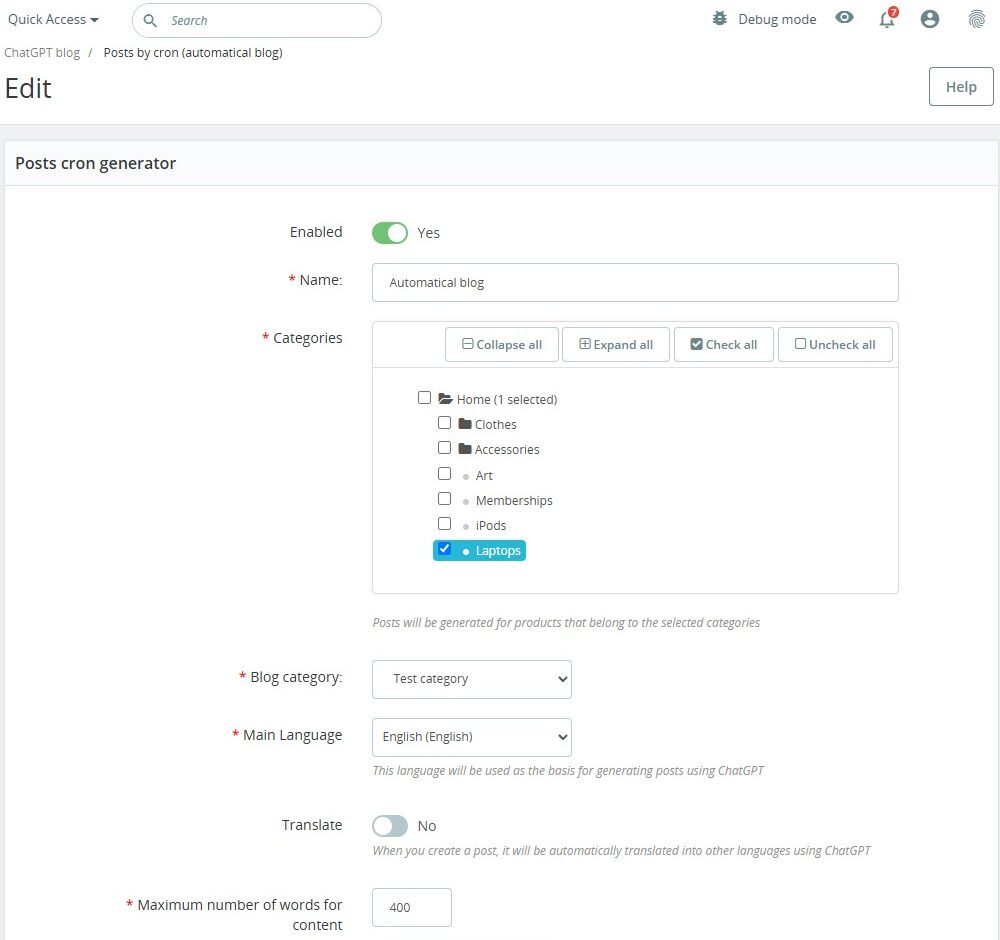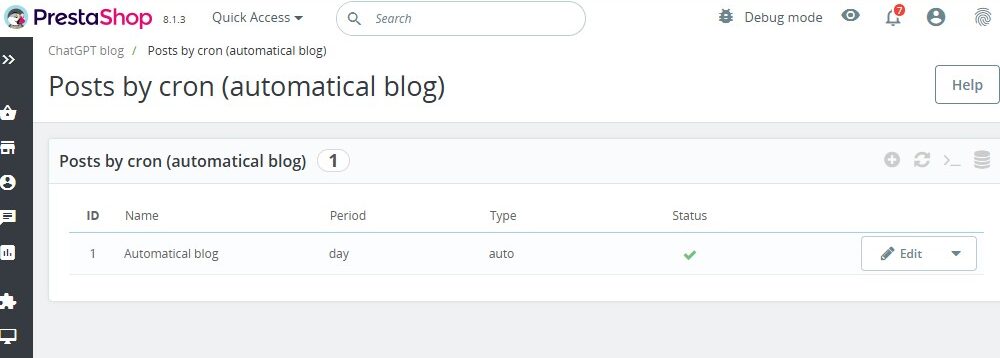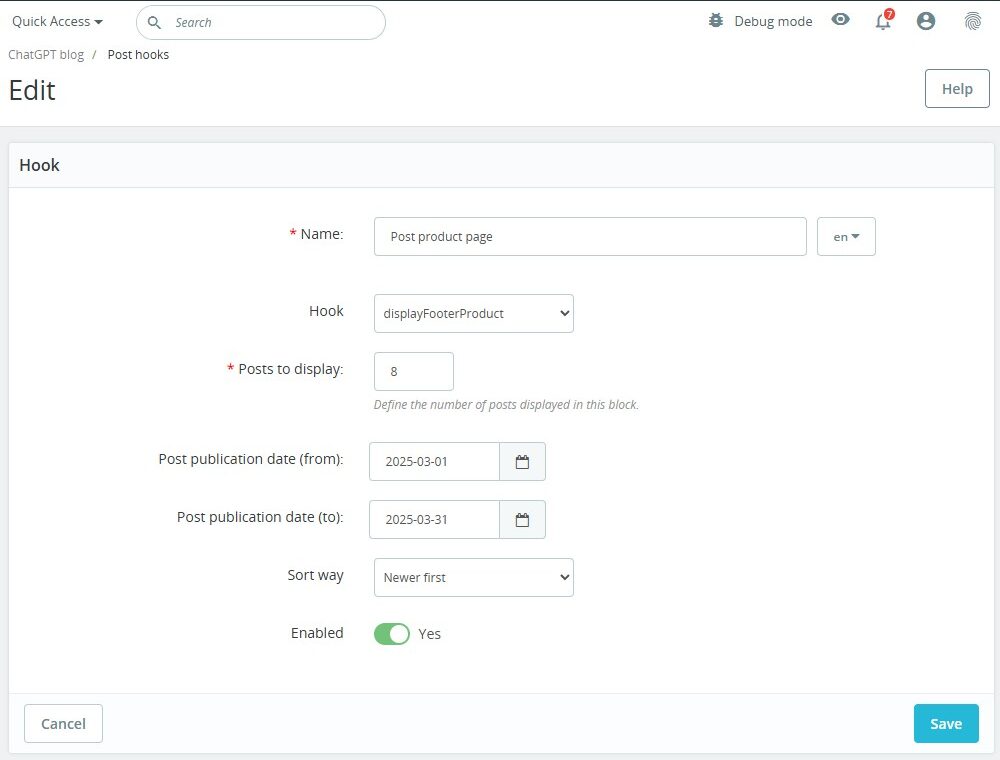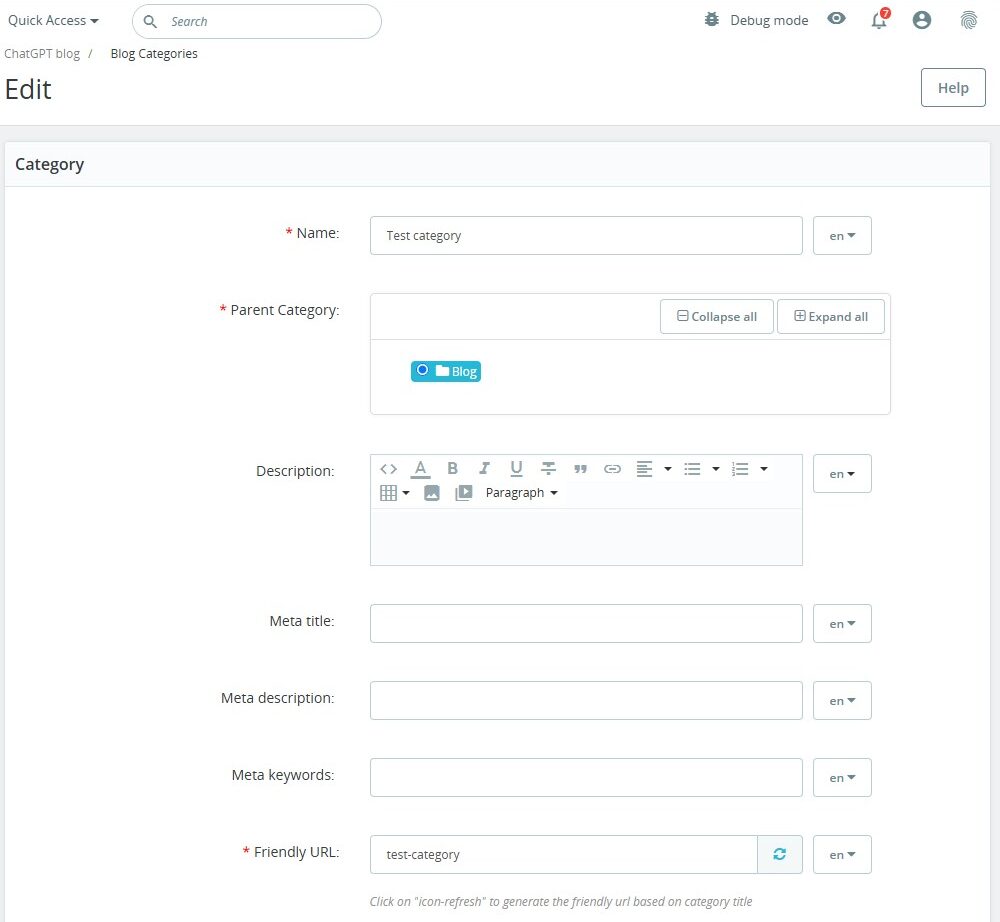How to Use ChatGPT-Generated Content in Prestashop
A Comprehensive Guide to Ethical and Effective Use of the ChatGPT Content Generator + Blog Module for PrestaShop
In today’s hyper-competitive digital landscape, businesses are constantly looking for ways to scale content production without sacrificing quality or brand integrity. The rise of AI-generated content, especially with tools like the ChatGPT Content Generator + Blog module for PrestaShop, opens exciting new possibilities — but also raises important questions.
How can you harness AI to accelerate your content strategy without diluting your voice, confusing your audience, or damaging your brand identity? This article takes a deep dive into that question, offering practical advice tailored specifically for online retailers using the SoftSprint module on PrestaShop.
🔍 What Is the ChatGPT Content Generator + Blog Module?
This innovative module bridges OpenAI’s powerful ChatGPT language model with your PrestaShop store. It enables eCommerce businesses to generate:
-
Unique product descriptions
-
SEO-optimized category texts
-
Fresh blog posts
-
Custom content for CMS pages
-
Multiple variations (“spin-offs”) of product pages
Additionally, it offers automated translation and content rewriting, making it ideal for multilingual stores or teams with limited editorial resources.
At first glance, it sounds like the ultimate tool for content automation — and in many ways, it is. But without clear content governance and editorial strategy, it can inadvertently create generic, off-brand, or even misleading content.
⚠️ The Risk: Losing Your Brand Voice in a Sea of AI-Generated Noise
Brand identity is more than just a logo or color palette. It’s the personality, values, tone, and unique promise your business communicates at every touchpoint. AI tools, including ChatGPT, are trained on vast amounts of generic internet data — which can result in output that sounds plausible, but lacks nuance or originality.
When you rely too heavily on automated content without human review or brand calibration, your messaging can become:
-
Inconsistent – Tone and language vary wildly across products or pages.
-
Inauthentic – Copy sounds robotic or overly polished.
-
Irrelevant – Content strays from your unique value proposition.
-
Factually wrong – ChatGPT may “hallucinate” information, especially on niche or technical topics.
Avoiding these pitfalls is essential if you want to use AI to enhance your brand, not erode it.
✅ Best Practices: How to Use the ChatGPT Content Generator + Blog Module Without Compromising Your Brand Identity
Let’s walk through a series of strategic actions to ensure you get the most out of this powerful tool, without risking your brand’s credibility.
1. 🎯 Define and Document Your Brand Voice
Before you generate a single paragraph with AI, you should be crystal clear on:
-
Your target audience
-
Your brand tone (e.g., playful, formal, technical, conversational)
-
Your vocabulary (e.g., use of slang, jargon, abbreviations)
-
Phrases to use or avoid
➡️ Action Step: Create a simple Brand Voice Guide. Feed this as a prompt into the ChatGPT module before generating content.
Example prompt:
“Write a product description for a luxury organic skincare brand with a tone that is elegant, warm, and confident. Avoid slang. Highlight benefits in a poetic yet clear style.”
2. 🧠 Use AI as a Creative Assistant — Not an Autopilot
Think of AI as a junior copywriter: fast, prolific, but lacking the deep knowledge or emotional intuition of your brand. Use it to:
-
Generate first drafts you can polish
-
Spark ideas for product naming or blog topics
-
Rework or rephrase outdated content
-
Suggest SEO-rich copy blocks
But never skip human review.
➡️ Action Step: Build a review workflow into your content process. Treat AI content like a draft that requires human editing before publication.
3. 📝 Curate and Train with Prompts
The strength of AI output depends heavily on the quality of your prompt. For consistent results:
-
Save your best prompts for each type of content (product pages, blogs, SEO descriptions)
-
Include brand-specific info in every prompt: target audience, tone, priorities
-
Be explicit about structure (headings, bullet points, CTA placement)
➡️ Action Step: Create a prompt library for your team that mirrors your brand’s content needs and structure.
4. 🌍 Don’t Rely on Default Translations
Although the module supports multilingual content creation, AI translations may sound unnatural or fail to reflect cultural nuance.
➡️ Action Step: For multilingual stores, generate AI translations as drafts only. Then, either:
-
Have a native speaker polish the result
-
Use specialized AI prompts that include tone and audience direction (e.g., “Translate this into formal French for luxury buyers in Paris.”)
5. 📚 Avoid Hallucinations and Verify Facts
ChatGPT does not “know” facts — it predicts plausible language. As a result, it can:
-
Invent product features
-
Misstate specifications
-
Use inaccurate brand claims
This is especially risky for products with regulatory, medical, or technical claims.
➡️ Action Step: Ensure every piece of AI content is fact-checked before going live. Treat AI as a writing tool, not a source of truth.
6. 📸 Use Content Spin-Offs Strategically
One powerful feature of the module is the ability to generate several variations of product or category descriptions. This is great for:
-
A/B testing
-
Preventing duplicate content across multiple product pages
-
Creating long-tail SEO entries
But excessive or poorly edited spin-offs may dilute your message or confuse customers.
➡️ Action Step: Limit spin-offs to 2–3 high-quality versions per product. Use them to test messaging performance or localize content per region.
7. 📢 Keep Transparency and Trust Front-of-Mind
More consumers are becoming aware of AI in digital experiences. They value authenticity and honesty. If your blog or descriptions sound AI-written and generic, it can harm perception — especially for luxury, ethical, or artisan brands.
➡️ Action Step: Be transparent when necessary. For blog posts, consider noting that AI was used with human review. Prioritize human-like language and emotional cues in tone.
8. 📈 Monitor Performance, Not Just Volume
AI enables content at scale — but more content ≠ better brand presence. Focus on:
-
Engagement metrics (bounce rate, time on page)
-
SEO performance (CTR, organic rankings)
-
Conversion rates (for product pages)
➡️ Action Step: Track performance of AI-generated content separately if possible. Use insights to fine-tune prompts and editing strategies.
9. 🧩 Integrate Blog Content for Holistic SEO
The module allows you to create product-related blog posts directly linked to your store’s products. This creates rich internal linking, enhances keyword presence, and boosts authority.
➡️ Action Step: Use blog posts to support brand storytelling, not just keywords. For example:
-
Explain the history or design philosophy behind a collection
-
Interview your team or customers (AI-generated drafts, human-polished)
-
Share how-to guides, care instructions, or styling tips
🧭 Real-World Workflow Example
Let’s imagine you sell hand-crafted leather accessories and want to add a new product: a minimalist black leather wallet.
Your workflow might look like this:
-
Prompt ChatGPT:
“Write a product description for a handmade black leather wallet targeting men aged 25–40 who appreciate minimalism and craftsmanship. Tone: sleek, confident, understated.”
-
Generate 2 spin-offs using the module.
-
Edit both drafts for tone, clarity, and factual alignment (e.g., real material used, shipping time).
-
Pick best performer after a few weeks using click and conversion data.
-
Generate a blog post:
“Write a blog post about why minimalist wallets are the best choice for modern professionals. Mention our handmade black leather wallet as an example.”
-
Use internal linking from the blog to the product page and vice versa.
🧾 Final Thoughts: AI as a Brand Ally, Not a Threat
AI is here to stay — and tools like the ChatGPT Content Generator + Blog module make it easier than ever to scale content on PrestaShop. But with great power comes great responsibility.
Brands that win in the AI era won’t be the ones who generate the most content — they’ll be the ones who use it most intelligently, blending automation with human empathy, oversight, and creativity.
Treat AI as your assistant, not your voice. Let it handle the heavy lifting, while you steer the ship.





